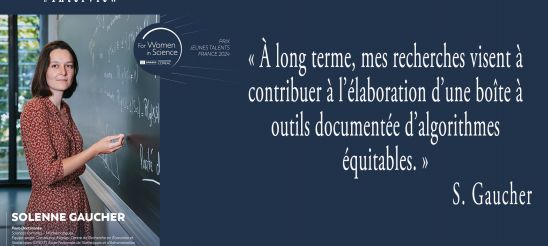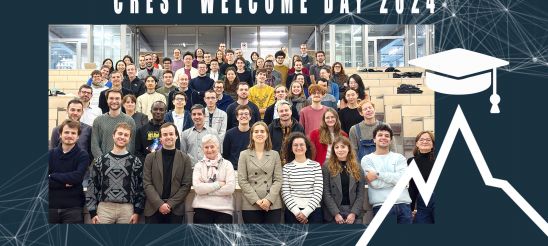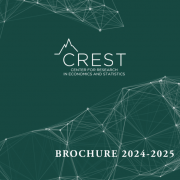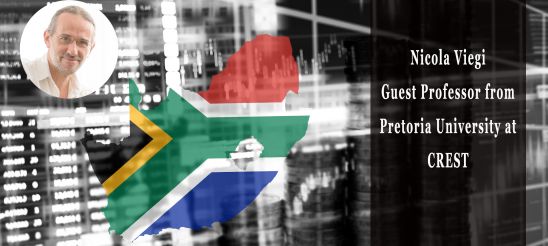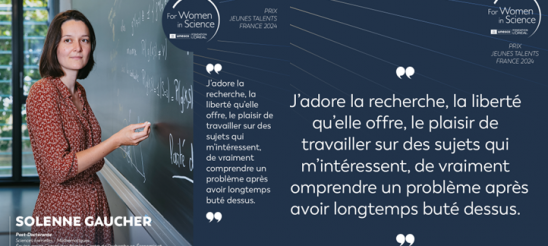Essai : Une étrange victoire, l’extrême droite contre la politique par Michaël Foessel et Etienne Ollion
Le 18 octobre 2024, Michaël Foessel, philosophe, professeur à l’Ecole polytechnique ainsi que Etienne Ollion, directeur de recherche en sociologie (CNRS) au CREST publient un essai Une étrange victoire, l’extrême droite contre la politique aux éditions Seuil.
Les auteurs
Michaël Foessel, agrégé de philosophie, est actuellement directeur du département humanités et sciences sociales à l’École polytechnique. Ses recherches s’articulent principalement autour des questions de démocratie, de modernité, de sécularisation et des affects politiques, explorant notamment des notions comme la peur, le ressentiment et l’espoir. Il est également reconnu pour ses réflexions sur l’articulation entre l’intime et le politique, et la manière dont la vie privée s’entrelace avec l’espace public.
Étienne Ollion est membre du CREST et directeur de recherche en sociologie au CNRS. Ses travaux récents se concentrent sur deux axes principaux : d’une part, la politique et le pouvoir, et d’autre part, les méthodes computationnelles, souvent en les combinant dans une approche innovante.
L'ouvrage
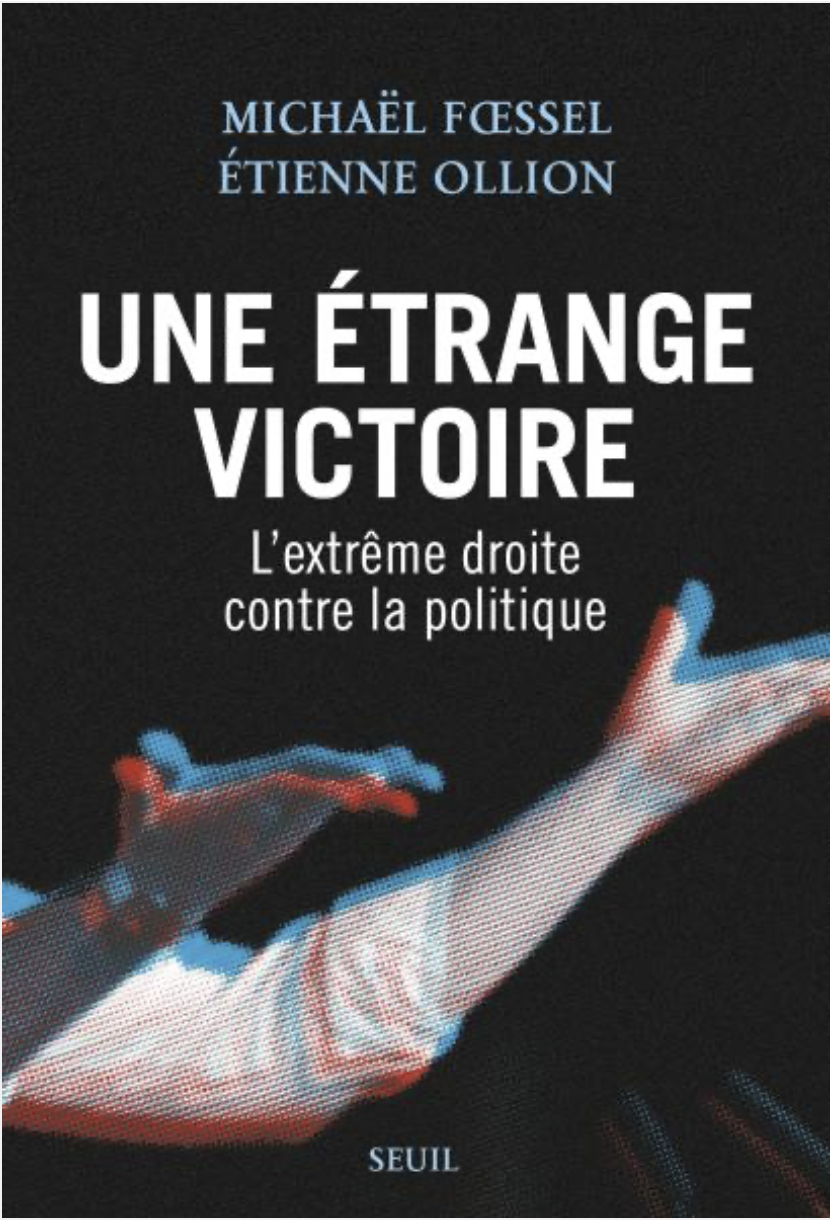
Dans Une étrange victoire, l’extrême droite contre la politique, Michaël Foessel et Étienne Ollion analysent les transformations du paysage politique contemporain, en particulier la montée de l’extrême droite. Le livre se penche sur les évolutions du Rassemblement National (RN) en France et sur la manière dont ce parti a pu se rapprocher des normes républicaines tout en conservant certains de ses thèmes traditionnels.
Les auteurs explorent les changements dans les repères politiques classiques, comme le clivage gauche-droite, et montrent comment ces transformations ont contribué à rendre l’extrême droite plus acceptable pour une partie de l’électorat. Le livre aborde également les effets de ces évolutions sur l’espace public et le débat politique.
Cet ouvrage invite à réfléchir aux mutations des cadres politiques et à la manière dont elles redéfinissent les contours de la démocratie contemporaine.
La presse en parle
Regards : https://regards.fr/il-ne-faut-pas-croire-que-le-rn-sest-dediabolise-tout-seul/
LCP : https://lcp.fr/programmes/ca-vous-regarde/elections-americaines-tous-les-coups-sont-permis-314875
France Culture : https://www.radiofrance.fr/franceculture/podcasts/questions-du-soir-l-idee/infrapolitique-selon-michael-foessel-et-etienne-ollion-3658990
Non fiction : https://www.nonfiction.fr/article-12192-entretien-avec-etienne-ollion-letrange-victoire-de-lextreme-droite.htm
France Culture : https://www.radiofrance.fr/franceculture/podcasts/les-matins/coptes-d-egypte-notion-d-apologie-du-terrorisme-michel-barnier-sous-la-menace-du-rn-4736092
Le Populaire du Centre : https://www.lepopulaire.fr/paris-75000/actualites/apres-la-censure-de-michel-barnier-le-rn-est-il-encore-au-centre-du-jeu-politique-ca-rebat-les-cartes-estime-etienne-ollion_14608116/
Pauline Rossi, invitée de l’émission “Les matins de France Culture” sur la démographie
“Démographie : le péril vieux”
Pauline Rossi était l’invitée de l’émission Les matins de France Culture.
Mardi 22 octobre 2024
Olivier Gossner Named Fellow of the Econometric Society
Olivier Gossner: A Leading Specialist in Game Theory

Olivier Gossner is a prominent scholar at the intersection of economics and mathematics, renowned for his expertise in game theory. His research focuses on repeated games, the strategic use of information, and bounded rationality, exploring how individuals and institutions make decisions under uncertainty.
In his recent work, Gossner has introduced innovative models of strategic reasoning and proposed a significant reform to the Solvency II regulation, advocating for a reallocation of insurance capital towards the productive economy. His contributions aim to reshape how financial systems can better support economic growth.
Gossner holds multiple prestigious titles, including Fellow of the Game Theory Society, where he also serves as the Vice President for Communications, and now, Fellow of the Econometric Society. In recognition of his groundbreaking research, he was awarded an ERC advanced grant from the European Commission for his SInfoNiA project, which further advanced strategic information theory in economics.
Overview of The Econometric Society
Founded in 1930, the Econometric Society is one of the most prestigious academic societies in the world, bringing together leading economists and statisticians. Its mission is to advance economic theory in its relation to statistics and mathematics. The Society is known for its rigorous standards, and membership includes many of the most influential thinkers in economics over the past century.
The Econometric Society organizes major conferences around the world and publishes three of the field’s top journals: Econometrica, Quantitative Economics, and Theoretical Economics. Its influence extends across academic circles and into the policy-making world, where insights from its members shape major economic decisions globally.
What It Means to Be a Fellow of the Econometric Society
Becoming a Fellow of the Econometric Society is one of the highest honors in the field of economics. Each year, the Society recognizes a select group of economists whose research has made a profound impact on the field. The nomination process is highly competitive, and Fellows are selected based on their body of work, their contributions to advancing economic knowledge, and their influence on the academic community.
For Olivier Gossner, this fellowship represents a crowning achievement in a career already full of significant milestones. It places him in a distinguished group of scholars who have shaped modern economic theory and practice, and it recognizes his contributions to game theory and decision-making processes.
CREST and The Econometric Society
CREST (Center for Research in Economics and Statistics) maintains a significant relationship with the Econometric Society, with its researchers contributing to some of the field’s most prestigious journals. CREST researchers have published 8 papers in Econometrica, including key works like “Consistent Pseudo-Maximum Likelihood Estimator and Group Transformation” by G. Gourieroux, A. Monfort, and J.M. Zakoian, as well as Yves Le Yaouanq’s research, “Dual-self Representations of Ambiguity Preferences.”
In Quantitative Economics, CREST has published 5 papers, with notable studies such as “The Provision of Wage Incentives: A Structural Estimation Using Contracts Variation” by D’Haultfoeuille and Février, and “Inequality and Earnings Dynamics in France: National Policies and Local Consequences” by F. Kramarz, E. Nimier-David, and T. Delemotte.
The lab’s contributions extend to Theoretical Economics as well, with Olivier Loisel’s work on “The Implementation of Stabilization Policy” and Kikuchi and Koriyama’s research on “The Winner-Take-All Dilemma.”
CREST’s consistent publications in these prestigious journals reflect its prominent role in advancing economic research and theory on a global scale.
Interview – Solenne Gaucher, lauréate 2024 du prix L’Oréal Unesco pour les femmes et la science
Solenne Gaucher, post-doctorante statisticienne, au CREST-GENES a récemment obtenu le prestigieux prix L’Oréal Unesco pour les femmes et la science. Elle s’intéresse principalement à l’apprentissage séquentiel et aux problèmes de décision séquentielle, ainsi qu’à l’apprentissage automatique équitable.
Au sein du CREST, Solenne travaille avec Vianney Perchet, chercheur en statistique et enseignant à l’ENSAE Paris sur le projet FairPlay, en partenariat avec l’INRIA.
Nous avons saisi l’occasion de ce prix pour en savoir un peu plus sur Solenne, son parcours et son travail au CREST.
Félicitations pour ce prix prestigieux ! Que représente pour vous le fait de recevoir le prix L’Oréal Unesco pour les femmes et la science ?
Je suis profondément honorée de recevoir ce prix, décerné par un jury aussi prestigieux. Au-delà de la reconnaissance de mes travaux, ce prix s’accompagne d’une responsabilité que je prends à cœur. En tant qu’ambassadrice de la Fondation L’Oréal-Unesco pour les Femmes et la Science, je souhaite soutenir activement sa mission : promouvoir une plus grande inclusion des femmes dans le domaine scientifique, qui est un enjeu fondamental pour l’égalité des genres.
A votre avis, quelles sont les raisons de la sous-représentation des femmes en science, et quel impact une meilleure représentativité pourrait-elle avoir ?
Le nombre de femmes dans les domaines scientifiques reste alarmant. En France, elles ne représentent que 29% des chercheurs en sciences, et cette proportion chute encore davantage dans des disciplines comme les mathématiques, où seulement 22% des enseignantes-chercheuses à l’université sont des femmes. Ces chiffres, bien qu’ils reflètent la faible présence des femmes dans les filières scientifiques, en sont également une des causes.
Je suis convaincue que le manque de modèles féminins visibles dans l’enseignement supérieur peut freiner les ambitions des étudiantes, les poussant à douter de leur légitimité. A cela s’ajoutent d’autres facteurs :
- Un soutien insuffisant de l’entourage pour s’engager dans des carrières scientifiques ;
- Un sentiment d’illégitimité dans un environnement perçu comme très masculin ;
- Une aversion plus marquée pour la compétition, qui peut éloigner certaines jeunes femmes de filières considérées comme élitistes.
Cette situation est préoccupante, car elle freine l’égalité des genres dans notre société. Les études scientifiques ouvrent les portes à des carrières parmi les plus prestigieuses et les mieux rémunérées. Pour y remédier, il est indispensable de mener des actions ciblées tout au long du parcours des jeunes femmes, dès la petite enfance, en luttant contre les stéréotypes de genre, et jusqu’aux études supérieures, en les conseillant sur leur orientation et en les encourageant activement à se tourner vers des carrières scientifiques.
Comment pensez-vous que ce prix influencera votre carrière et vos projets de recherche futurs ?
En tant que jeune chercheuse, ce prix apporte à la fois une reconnaissance et une visibilité précieuse à mes travaux. Plus matériellement, ce prix conséquent me donne une certaine indépendance financière, et me permettra notamment de financer un séjour de recherche à l’étranger, de voyager pour présenter mes travaux et nouer des collaborations avec des chercheurs de divers horizons. Ce prix ouvre donc de nouvelles perspectives pour mes projets de recherche.
Vous avez obtenu ce prix dans le cadre de votre travail sur l’équité algorithmique. Pouvez-vous nous présenter ces travaux ?
Mes travaux portent sur les enjeux d’équité dans les algorithmes d’apprentissage automatique, ou machine learning. Pour comprendre pourquoi ces algorithmes peuvent produire des réponses biaisées, il est essentiel de comprendre leur fonctionnement : ils apprennent à partir de larges jeux de données à repérer des relations entre différents éléments décrits par ces données. Par exemple, un logiciel de génération de texte associe certains mots à des contextes spécifiques et reproduit ces associations dans ses réponses.
Cependant, si les données d’entraînement contiennent des biais, les algorithmes risquent de les reproduire, voire de les accentuer. Par exemple, des journalistes de Reuters ont rapporté qu’un algorithmes de recrutement d’ingénieurs, entraîné sur des données historiques de recrutement, reproduisait les biais présents dans les données en discriminant les candidatures féminines. De tels cas illustrent un consensus croissant parmi les scientifiques : les algorithmes de machine learning, lorsqu’ils sont formés sur des données biaisées, peuvent perpétuer ou aggraver les discriminations déjà présentes.
Mes recherches visent à mesurer et prévenir les discriminations des algorithmes. La complexité du sujet dépasse son aspect purement mathématique : une décision juste dans un contexte peut sembler injuste dans un autre, ce qui nécessité de développer différentes approches complémentaires. A court terme, le souhaite étudier certains critères d’équité spécifiques, et en particulier comprendre les conséquences de ces contraintes, et comment les intégrer dans les algorithmes. A long terme, mes recherches visent à contribuer à l’élaboration d’un boîte à outils documentée d’algorithmes équitables. Celle-ci fournirait aux décideurs des méthodes pratiques pour mettre en œuvre tel ou tel critère tout en expliquant les conséquences et les effets néfastes potentiels de ces choix.
Pouvez-vous nous expliquer ce qui vous a motivé à explorer le domaine de l’équité dans les algorithmes d’intelligence artificielle ?
Ce domaine de recherche présente deux intérêts majeurs à mes yeux. D’une part, il permet de répondre à un problème ayant un impact sociétal significatif, où les mathématiciens et mathématiciennes ont un rôle clé à jouer. D’autre part, il s’agit d’un champ de recherche émergeant et particulièrement dynamique. De nombreuses questions fondamentales restent ouvertes, et ce domaine présente des défis mathématiques vraiment captivants.
Qu’est-ce qui vous a poussé à choisir une carrière de chercheuse en statistiques et en mathématiques appliquées ?
J’ai choisi de faire une carrière scientifique par passion pour les mathématiques. Je n’avais pas de métier précis en tête en commençant mes études, et pas d’autre but en tête que celui de continuer à pratiquer des sciences. Je ne visais pas un métier en particulier, mais je savais que ces études m’ouvraient de nombreuses portes. J’ai suivi, à chaque choix d’orientation, la voie qui me permettait de continuer à faire des mathématiques, qui me plaisaient particulièrement. J’ai donc assez naturellement fait un master de recherche, qui m’a conduit à faire une thèse.
J’aime particulièrement la liberté que le métier de chercheuse m’offre. En premier lieu, la liberté de travailler sur les problèmes qui m’intéressent, et de continuer à apprendre de nouvelles techniques, à découvrir de nouveaux sujets. Et, bien sûr, la liberté de choisir avec qui travailler. C’est aussi un métier qui procure un vrai plaisir intellectuel : celui de modéliser un problème réel en termes mathématiques, de réfléchir et de raisonner, de comprendre !
L’enseignement est également une partie de ce métier que je trouve vraiment gratifiante, car elle permet de mesurer immédiatement l’impact de son travail, à travers les progrès visibles de ses élèves.
Welcome Day at CREST – A Great Start to the New Academic Year
On October 10, 2024, CREST held its annual Welcome Day, an event dedicated to welcoming new members (research assistants, PhD students, postdoctoral fellows, and faculty members), offering them an introduction to the laboratory through presentations from the management team and thematic leaders.
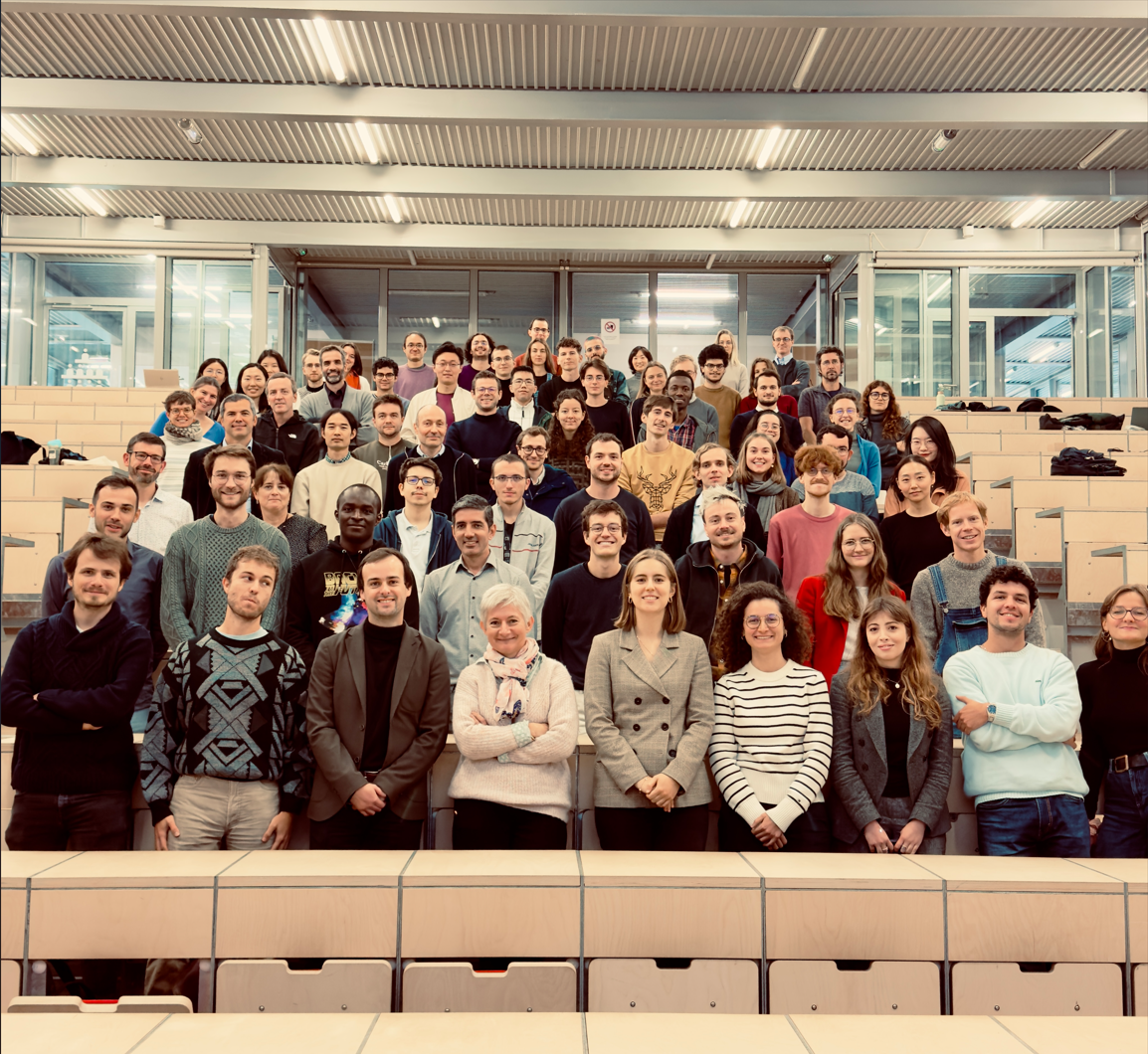
This year, all CREST sites (CREST-ENSAE Paris, CREST-ENSAI, and CREST-Télécom Paris) gathered at the ENSAE Paris campus.
The presentations provided the new members with a comprehensive understanding of CREST’s institutional environment, particularly its affiliations with the Institut Polytechnique de Paris and the University of Rennes. Each newcomer also had the opportunity to introduce themselves and their research project, fostering exchanges with both new and existing members of CREST.
The thematic leaders highlighted well-being initiatives at CREST, as well as the structure of the doctoral program at IP Paris. The event also allowed the administrative team to outline their roles and share useful recommendations.
Our scientific data engineers demonstrated Onyxia, a solution recently deployed in collaboration with GENES.
Finally, CREST PhD students shared information about various reading groups, other lab initiatives, and teaching opportunities available during the doctoral program.
This event also marked the unveiling of CREST’s new institutional brochure for the academic year, which provides an overview of the lab’s research and teaching activities, as well as its prestigious achievements.
Une présentation vidéo de Pierre Boyer pour l’IGPDE
Une présentation vidéo de Pierre Boyer pour l’IGPDE.
09/10/2024
Nicola Viegi, Visiting Professor from Pretoria University at CREST

We are pleased to welcome Professor Nicol Viegi, South African Reserve Bank Chair in Monetary Policy Studies at the University of Pretoria, South Africa, as a visiting professor at CREST with Prof. Giovanni Ricco.
Professor Viegi, along with Giovanni Ricco, has been collaborating for several years on an ongoing project focused on the analysis of monetary policy in emerging markets. Their research leverages state-of-the-art technologies that are traditionally used to study monetary policy in developed economies, particularly in the United States. The first significant outcome of this collaboration, co-authored with Ekaterina Pirozhkova (EM Normandie and SARB), is the paper “Trouble Every Day: Monetary Policy in an Open Emerging Economy” (CEPR Discussion Paper DP19094). In this paper, event study and high-frequency identification techniques are applied to South Africa to explore two primary aspects: first, how monetary policy communication affects the yield curve and other assets, and second, how these effects are transmitted throughout the economy. One of the key goals of Professor Viegi’s visit to CREST is to refine this analysis and co-author a VOXEU article to further explore the broader policy implications of this research.
In addition to this, Professor Viegi is embarking on a new research project that will investigate the macroeconomic effects of central bank balance sheets and their operating frameworks. There is a burgeoning literature, spearheaded by scholars like Ricardo Reis, examining the “new-style central banking,” which entails changes in the size, composition, and remuneration rules of central bank balance sheets, initially developed in response to financial crises. This new operating framework is increasingly being promoted by the IMF as a model for separating financial stability interventions from interest rate policies in emerging markets. South Africa has adopted a similar framework, and Professor Viegi’s research will aim to delve into its effectiveness, macroeconomic impacts, and critical aspects in the context of an emerging market economy. His visit to CREST will allow him to advance this project, developing a theoretical framework to support the analysis.
Finally, Professor Viegi plans to take advantage of his time at CREST to author a policy paper titled “The Past, Present, and Future of Monetary Policy in South Africa.” This reflective piece will summarize the lessons learned from over two decades of inflation targeting in South Africa, while also considering the role monetary policy can play in overcoming the current economic stagnation and supporting the country’s growth and development. The paper will be presented at a national policy conference early next year, where academic and policy experts will gather to discuss the future trajectory of the South African economy.
Nouvelle Note IPP – L’expérimentation AvenirPro : un levier pour l’insertion professionnelle des élèves de CAP et BacPro
L’Institut des politiques publiques (IPP) publie une nouvelle note qui présente les premiers résultats de l’expérimentation AvenirPro, un travail de Pierre Cahuc, Jérémy Hervelin, Arnaud Largy et Arne Uhlendorff. Il s’agit d’un dispositif visant à améliorer l’insertion professionnelle des élèves de lycées professionnels. Le programme, déployé en 2021-2022, a accompagné plus de 4 000 élèves à travers la France, avec un impact positif sur leur taux d’emploi, notamment pour les jeunes rencontrant le plus de difficultés.
Les résultats montrent une augmentation de 45 % du taux d’emploi des participants, ainsi qu’une hausse significative du nombre de jours travaillés. Ce programme, coordonné par France Travail, propose un accompagnement collectif en classe et un suivi personnalisé après la fin de l’année scolaire.
📈 Chiffres clés :
- Le taux d’emploi des élèves a augmenté de 16 % à 23 %.
- Le nombre de jours travaillés a triplé pour les élèves les plus en difficulté.
- Une baisse de 22 % de l’inscription en études supérieures est observée, nécessitant des analyses complémentaires.
Pour en savoir plus, consultez la note complète : https://www.ipp.eu/publication/lexperimentation-avenirpro-un-levier-pour-linsertion-professionnelle-des-eleves-de-cap-et-bacpro/
Solenne Gaucher named one of the L’Oréal-UNESCO 2024 France Young Talents for Women in Science
Congratulations to Solenne Gaucher, Ph.D. for winning the 2024 Fondation L’Oréal – UNESCO #ForWomenInScience France Young Talent Award!
Solenne Gaucher, Ph.D., is a postdoctoral researcher at CREST-GENES – Groupe des Écoles Nationales d’Économie et Statistique-ENSAE Paris where she dedicated her work to fair marchine learning algorithms on the FairPlay project with Vianney Perchet and Inria.
We are proud that her dedication and the excellence of her research have been recognized by Académie des sciences, Fondation L’Oréal and UNESCO, which empowers women scientists and inspires the next generation.
Read more on the official press release: https://www.fondationloreal.com/sites/default/files/2024-10/cp_prix_jeunes_talents_2024_l_oreal-unesco_for_women_in_science_vdef.pdf





